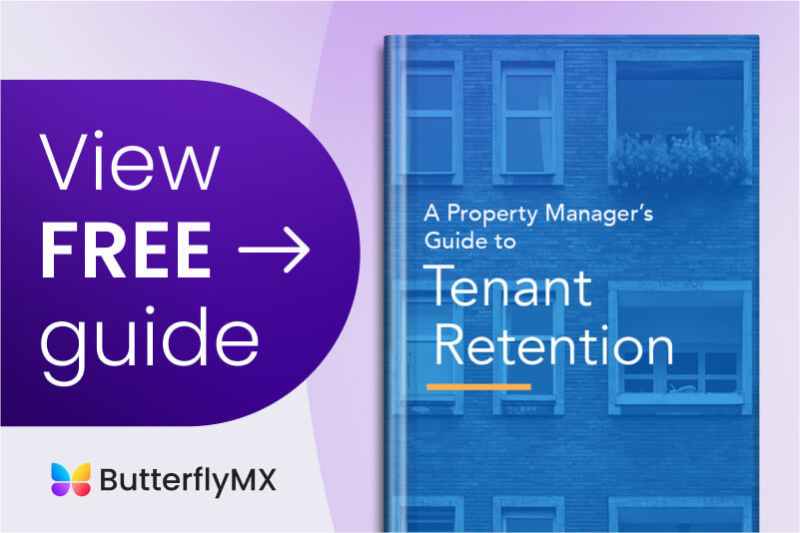
As a property manager, the worlds of architecture and urban planning might seem far removed. But their actions, thoughts, and ideas affect the properties you manage. And, more importantly, they affect your residents’ living experience. The latest design trend sweeping the architecture industry is active design. But why are designers so fond of it, and how can active design help you?
In this post, we explain what active design is and what its benefits are. Then, we offer some examples of active design, and show you some ways you can incorporate these principles into your property.
This post covers:
- What is active design?
- Benefits of active design
- What are some examples of active design?
- 3 ways to incorporate active design principles into your property
What is active design?
Active design is an architectural and urban planning movement that seeks to emphasize the physical and mental health of residents by encouraging them to lead more active lives. Architects in this movement focus on the ways living in a city or a building can affect a person’s physical health, and try to incorporate opportunities for exercise and recreation into the fabric of the city itself.
Active building design is a response to some of the unintended consequences of living and working in today’s urban world. These days, it’s common for the average person to spend a lot of their day sitting — and whether you’re stuck in traffic or behind a desk at an office job, all of that inactivity eventually adds up and creates health problems. Sitting down too much can contribute to a host of chronic health problems, like cardiovascular diseases or diabetes.
So, to combat these health problems, planners seek to improve the livability of cities by focusing on areas like pollution and walkability.
Discover the top 5 multifamily design trends:
Benefits of active design
Three benefits of active design include:
1. Health benefits
Residents of actively designed buildings are healthier because they walk around more. The benefits of regular walking include lower blood pressure, lessened fatigue, and lower risks of joint pain.
Walking has significant positive effects on a resident’s mental health, as well. For instance, a resident who takes walks and connects with the outdoors is often less stressed and experiences higher levels of productivity. In addition, walks put residents in better moods and give them more energy.

2. Increased sustainability
By encouraging your residents to walk or bike more, you’ll be cutting down on the emissions that come with heavy car usage. And the benefits of active, sustainable design have positive implications on your bottom line, too. In fact, consider the energy and maintenance savings that come with decreased elevator usage in your building.
3. Increased resident happiness
When it comes time for your residents to renew their leases, they have a lot of factors to consider. Certain aspects of your property, like walkability and sustainability, are becoming increasingly important to younger generations of renters.
By embracing the architectural movements of the future, you benefit yourself while also positioning your property as especially attuned to the wants and needs of millennial and Gen Z renters. You may also notice fewer resident complaints after implementing active design principles.
Watch how ButterflyMX improves the resident experience:
What are some examples of active design?
Active design architecture is taking root in cities around the world.
New York City’s High Line is a fantastic example. Originally a rail line that fell into disuse, city planners transformed the 1.45-mile-long railway into an urban oasis overflowing with green spaces. A drab stretch of abandoned railway was transformed into a third place development that’s become one of the city’s most vibrant and interesting parks. The High Line showed the world that active-inspired design principles are a great way to keep city residents happy and active.
Across the Atlantic, a subway station in Sweden employed vastly different tactics to get commuters interested in taking the stairs instead of the escalator. Station managers installed a series of sensors that took up the entire length of a step. Each step was then connected to a speaker that would sound a piano note every time somebody stepped on one of the ‘keys’. In effect, they transformed the staircase into a giant piano. This was a great success. The station reported that 66% more people than normal chose to take the stairs.
You’ve seen how active living design can affect exterior spaces in cities, and those same principles can guide interior designers and property managers. Specifically, for a building that incorporates these principles, look no further than the New School’s University Center. The structure of the building itself encourages students to spend time in different common areas or lounges by placing staircases in prominent positions. Consequently, this increases mobility rates and generates more resident activity.
3 ways to incorporate active design principles into your property
You might be wondering how you, as a property owner or manager, can reap the benefits of active design.
Three ways you can incorporate active design principles into your property are:

1. Installing bike racks
Do whatever you can to make it easier for your residents to explore non-automobile means of travel. A resident who travels by bike stays active while helping the environment. So, you can do your part to help that resident by installing a bike rack or shed for safe bicycle storage.
Overall, bike racks are a great apartment building upgrade that is more likely to encourage residents to ride their bikes throughout the community.
2. Maintaining your stairs
A resident might choose to take an elevator over stairs because of improperly maintained stairwells. Make sure your stairwells are always in top condition. This way, you’ll encourage a resident to take the stairs and experience the benefits of an actively designed space.
Also, you can install fixtures that make a trip up the stairs more visually interesting and satisfying. For example, some creative designers have chosen to install art, plant fixtures, or signage to keep a resident engaged throughout their journey up or down a stairwell.
3. Zoning your building for mixed-use
A mixed-use property contains both residential and commercial tenants. Mixed-use buildings contribute to active design by giving your residents a reason to head out of their apartments and walk around. In essence, you can give your residents a reason to head downstairs by hosting a local business, like a bookstore or a coffee shop.
Once a resident is downstairs, they’ll be mixing, mingling, and contributing to the atmosphere of your neighborhood. Since many prospective residents consider the quality of a neighborhood when choosing where to live, zoning your building for mixed-use ultimately makes your property even more appealing.
Takeaways
- To sum up, active architecture is an important and vital trend in today’s design landscape.
- By taking cues from the active design movement that’s sweeping the world, you’ll give your residents a forward-thinking living experience. Residents will appreciate benefits like better physical and mental health and increased sustainability.
- You can follow active design principles by paying special attention to your stairs, installing bike racks, and considering repurposing your property for mixed-use.






